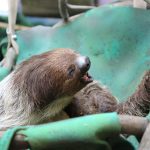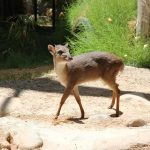Blue Duiker
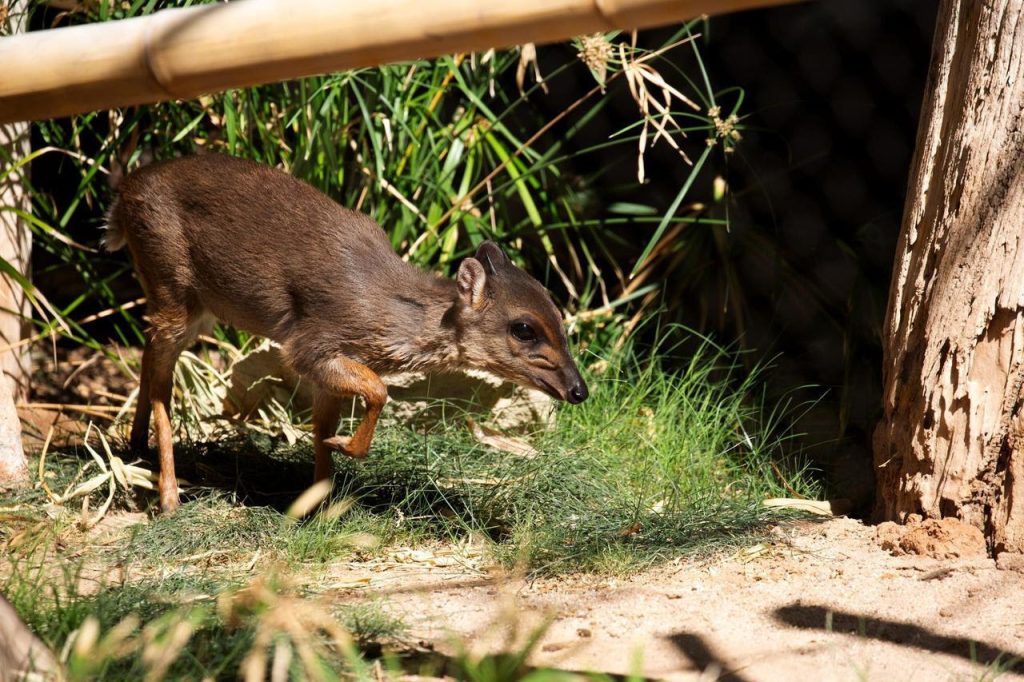
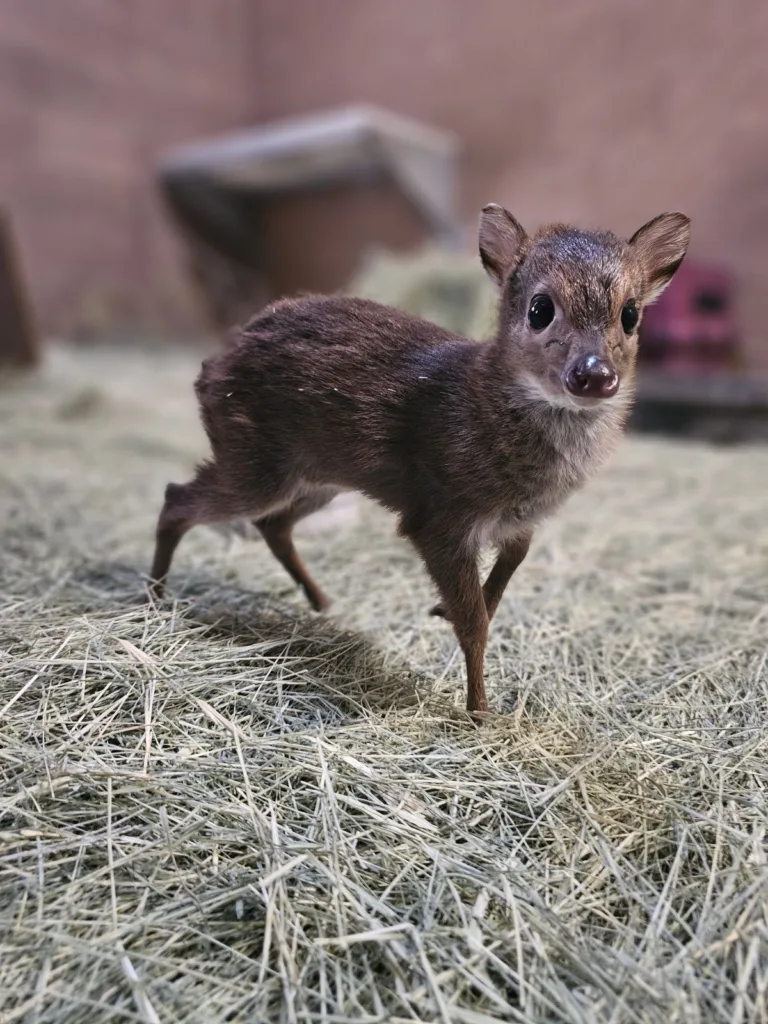
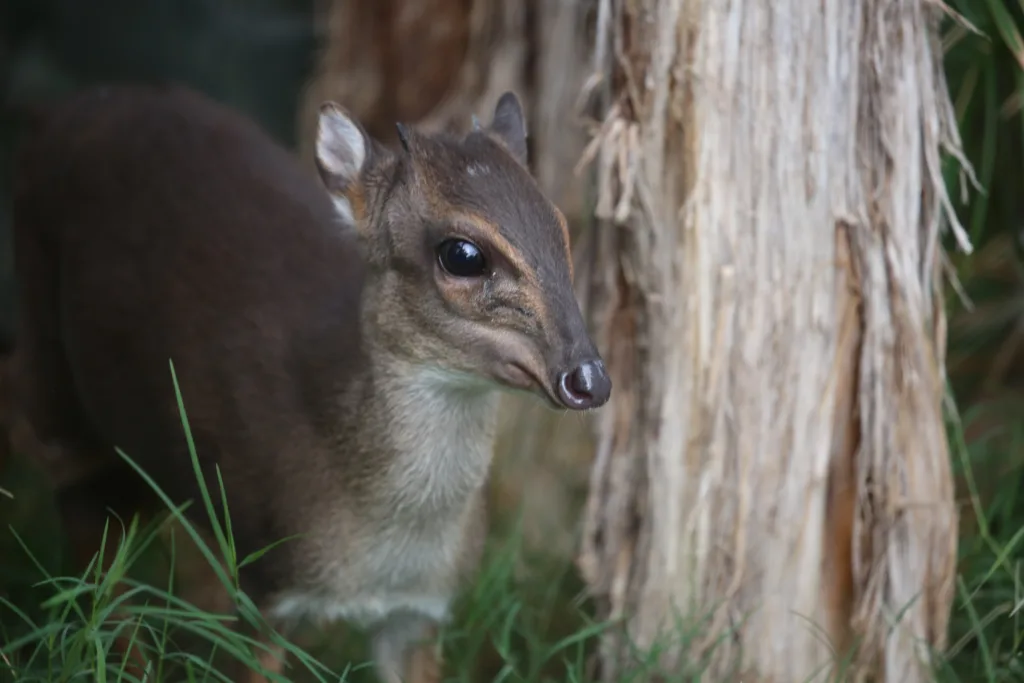
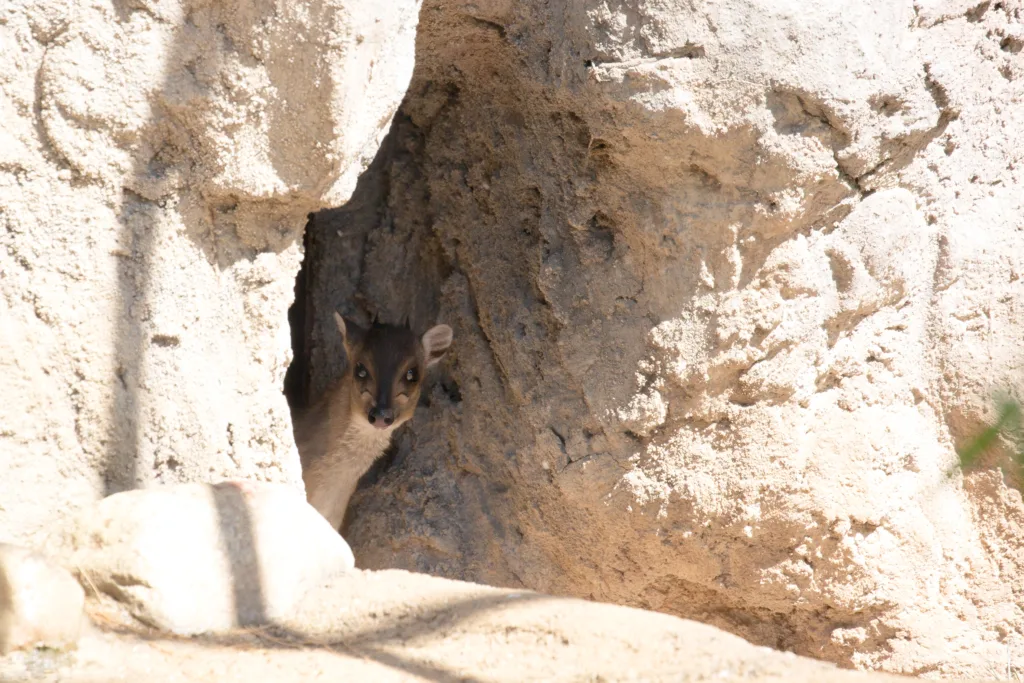
Blue duikers are the smallest species of duiker and are in the antelope family. Hair color varies depending on population, but a gray-colored individual will appear blue when in the shade. Both males and females have short, sharp horns (though sometimes lacking in females), a light eyebrow ridge, and a dark tail with a white underside that is visible when flicked up. Scent glands are located near the rear hooves and below each eye (called preorbital glands).
Diet:
Mostly herbivorous, the majority of a blue duiker’s diet is leaves. They will also eat fruit, berries, flowers, and fresh leaf litter dropped from trees by monkeys and birds, as well as the occasional insect or egg. Most of their water needs are met by the food they eat, so they are rarely observed drinking water even when it is available.
In the Wild:
Duiker means “diver” in Afrikaans, which refers to the animal’s ability to quickly dive into cover when startled. They are crepuscular, which means they are mostly active at dawn and dusk. This behavior allows them to rest and ruminate, or chew their cud, during the hottest part of the day. A male and female will form a lifelong bonded pair and both will defend a small territory of about 6-10 acres. In addition to scent marking with the preorbital gland beneath each eye, blue duikers communicate using whistles, sneezes, and growls. Tail flicking is also used to warn of danger. Calves are able to walk within 20 minutes of being born and spend their first few weeks of life hidden in the brush. They are weaned at about 3-5 months of age and reach their adult size at about 6-7 months. They will stay with their parents until sexually mature (between 9-12 months for females, 12-18 months for males). Natural predators include leopards, caracals, wild dogs, hyenas, pythons, crowned eagles, baboons, crocodiles, and monitors.
Conservation issues/actions:
With a growing human population, blue duiker habitat has been fragmented and increasingly urbanized. Healthy, intact forested areas are most important for blue duikers, though they can sometimes be found at the edge of urban areas or in farmland. With increased proximity to humans, human-wildlife conflict also increases. Blue duikers are also hunted for bushmeat throughout their range as they are an important source of protein and income for many local communities.
Species Name
Blue Duiker
Scientific Name
Philantomba monticola
Continent
Africa
Adopt a Duiker
At the Zoo
Through the Association of Zoos and Aquariums’ Species Survival Plan (SSP) program, AZA facilities and partners work together to create and maintain healthy, sustainable, and genetically diverse populations of animals in managed care. Reid Park Zoo participates in the blue duiker SSP, so any calves born at the zoo will remain with their parents until the time they would naturally leave, at which time they will go to another facility to be ambassadors for their species. A variety of natural enrichment is provided to the duikers at the Zoo to encourage natural behaviors and promote physical and mental wellness. Browse (branches with leaves) encourages natural feeding behaviors, sticks encourage scent marking using the preorbital gland, and hides throughout the habitat allow for the duiker’s natural desire for cover.
Proud Parents
- Ann Marie Wolf
- Gary Kessinger
- Shelly Denman
- Jo Ann Schlott
- Pat Brayer

